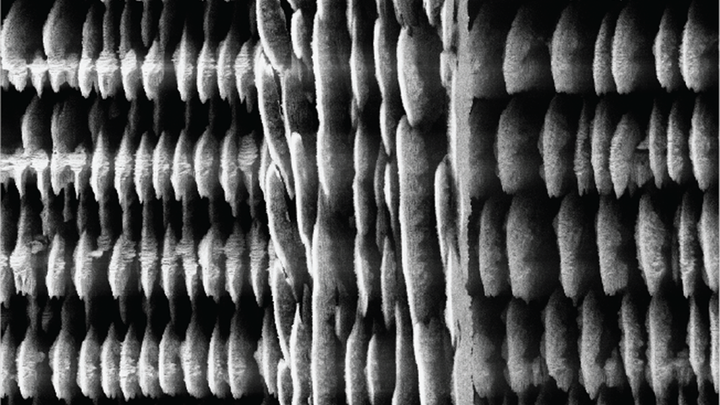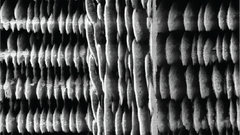3D printing method may improve micro energy storage
One key to making portable devices more compact and energy efficient lies in the precise nanoscale form of energy-storing capacitors. Researchers in Sweden report they've cracked the challenge with a unique 3D printing method.

Researchers at KTH Royal Institute of Technology demonstrated a 3D printing method for fabricating glass micro-supercapacitors (MSCs) that reduces the complexity and time required to form the intricate nanoscale features MSCs need.
The advance could potentially lead to more compact and energy-efficient portable devices, including self-sustaining sensors, wearable devices and other Internet of Things applications, says Frank Niklaus, professor of micro- and nanosystems at KTH. Their study was published in ACS Nano.
The new method addresses two key challenges to fabricating such devices. A micro-supercapacitor's performance is largely determined by its electrodes, which store and conduct electrical energy. So they need more electrode surface area, and they need nanoscale channels to facilitate rapid ion transport. Po-Han Huang, who was lead author of the study at KTH, says the new research addresses both challenges with through ultrashort laser pulse 3D printing technology.
The researchers discovered that ultrashort laser pulses can induce two simultaneous reactions in hydrogen silsesquioxane (HSQ), a glass-like precursor material. One reaction results in the formation of self-organized nanoplates, while the second converts the precursor into silicon-rich glass, which is the foundation of the 3D printing process. This enables the fast and precise fabrication of electrodes with plenty of open channels, which maximizes surface area and speeds up ion transport.
The researchers demonstrated the approach by 3D-printing micro-supercapacitors that performed well even when charged and discharged very quickly.
"Our findings represent a significant leap forward in microfabrication, with broad implications for the development of high-performance energy storage devices," Huang says. "Beyond MSCs, our approach has exciting potential applications in fields such as optical communication, nanoelectromechanical sensors and 5D optical data storage."
The implications are also significant for technologies presently in common use. Supercapacitors of the non-micro type are already collecting energy generated during braking, stabilizing power supply in consumer electronics, and optimizing energy capture in renewable energy, Niklaus says. "Micro-supercapacitors have the potential to make these applications more compact and efficient."
Contacts
Frank NiklausProfessorKTH Royal Institute of Technology
frank@kth.seImages

Subscribe to releases from KTH Royal Institute of Technology
Subscribe to all the latest releases from KTH Royal Institute of Technology by registering your e-mail address below. You can unsubscribe at any time.
Latest releases from KTH Royal Institute of Technology
To compete globally, Europe’s seafood farmers may get boost from AI research14.11.2024 13:30:27 CET | News
Underwater drones adapted to cold Nordic waters, and sensors that listen to the sounds of fish eating. These are some of the AI solutions that could give European sea farmers a boost to compete globally. Researcher Fredrik Gröndahl explains how maching learning is being developed take on operational challenges and reduce costs in aquaculture, particularly in inaccessible waters far offshore.
Method to remove microplastics from water could also speed up blood analyses15.8.2024 11:36:46 CEST | Press Release
Researchers demonstrated a way to speed up—and potentially scale up—the process for separating particles in fluids, which can be used for studying microplastics in drinking water or even analyzing cancer cells from blood.
Leading academics call for extending, reframing Sustainable Development Goals17.6.2024 10:46:06 CEST | Press Release
A group of leading academics are calling for the UN Sustainable Development Goals to be extended past their 2030 target date and updated with consideration for the impact of artificial intelligence (AI), and with more input from communities affected by the goals, among other recommendations.
1,000 times smaller than a grain of sand—glass sensors 3D-printed on optical fiber15.5.2024 15:06:46 CEST | Press Release
In a first for communications, researchers in Sweden 3D printed silica glass micro-optics on the tips of optic fibers—surfaces as small as the cross section of a human hair. The advance could enable faster internet and improved connectivity, as well as innovations like smaller sensors and imaging systems.
Climate is one culprit in spread and growth of Middle East dust levels30.4.2024 08:49:52 CEST | Press Release
Climate change is transforming dust storms—a natural phenomenon in the Middle East—into a more frequent and widespread threat to health and economies throughout the region, a new study shows.
In our pressroom you can read all our latest releases, find our press contacts, images, documents and other relevant information about us.
Visit our pressroom